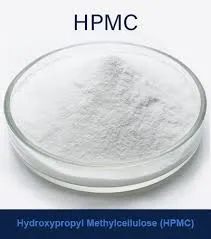
Oct . 11, 2024 09:02 Back to list
hpmc glass transition temperature
Understanding the Glass Transition Temperature in HPMC Implications and Applications
Hydroxypropyl methylcellulose (HPMC) is a widely used polymer, particularly in the pharmaceutical and food industries, due to its versatility and favorable properties. One critical characteristic of HPMC is its glass transition temperature (Tg), which plays a significant role in determining the material's behavior and performance in various applications. This article aims to delve into the intricacies of glass transition temperature in HPMC, its measurement, implications, and the factors affecting it.
What is Glass Transition Temperature?
The glass transition temperature (Tg) is a pivotal thermal property that marks the transition of a polymer from a hard and brittle glass state to a more rubbery, flexible state. Above Tg, the polymer chains gain sufficient mobility, which allows for increased segmental motion and, consequently, alterations in the physical properties of the material. For HPMC, this temperature is essential as it influences solubility, viscosity, stability, and the overall processing conditions of products containing HPMC.
Measurement of Tg in HPMC
The determination of Tg in HPMC can be accomplished through several techniques, including Differential Scanning Calorimetry (DSC), Dynamic Mechanical Analysis (DMA), and Thermomechanical Analysis (TMA). DSC is one of the most common methods employed, as it measures the heat flow associated with the thermal transitions of the material. The resultant endothermic shift in heat flow indicates the glass transition, allowing for the precise identification of Tg.
Typical Tg values for HPMC vary depending on its chemical structure, molecular weight, and the degree of substitution of hydroxypropyl and methyl groups. Generally, HPMC shows a Tg ranging between 135 °C to 180 °C, though these values can shift based on the formulation and processing conditions imposed during the product manufacturing stage.
Factors Influencing Tg of HPMC
hpmc glass transition temperature

Several factors can influence the glass transition temperature of HPMC. One of the most significant is the degree of substitution (DS), which refers to the amount of hydroxypropyl or methyl groups attached to the cellulose backbone. Higher degrees of substitution tend to lower Tg as they increase polymer flexibility by reducing intermolecular interactions.
Another influencing factor is the molecular weight of the polymer. Lower molecular weight HPMC grades tend to exhibit lower Tg values compared to their higher molecular weight counterparts. This is due to the increased chain mobility in lower molecular weight polymers, which facilitates transitions to a rubbery state at reduced temperatures.
Environmental conditions such as humidity and plasticizer content can also have profound effects on the Tg of HPMC. Increased moisture absorption can plasticize the polymer, leading to a decrease in Tg. Similarly, the incorporation of plasticizers such as glycerol or propylene glycol can also lower the Tg, making the material more flexible and improving processing characteristics.
Implications for Applications
The glass transition temperature of HPMC has significant implications for its applications. In the pharmaceutical industry, understanding the Tg allows formulators to optimize the design of drug delivery systems, especially in solid dosage forms. The compatibility of HPMC with active pharmaceutical ingredients (APIs) can influence the stability of solid dispersions, affecting drug release rates and bioavailability.
In the food industry, the Tg of HPMC is also crucial for evaluating its performance as a thickening agent, emulsifier, or stabilizer. A precise control of Tg can enhance the textural properties of food products and improve their shelf-life by preventing unwanted phase separations or crystallization.
Conclusion
In summary, the glass transition temperature of HPMC is a multifaceted property that significantly impacts the material's functionality across various industries. Understanding the factors that affect Tg allows for the optimization of formulations, enhancing the performance of products. As research continues to evolve, advancements in the understanding of Tg and its applications in HPMC will likely lead to innovative solutions in both pharmaceutical and food sciences, facilitating the development of more effective and stable products.
-
Versatile Hpmc Uses in Different Industries
NewsJun.19,2025
-
Redispersible Powder's Role in Enhancing Durability of Construction Products
NewsJun.19,2025
-
Hydroxyethyl Cellulose Applications Driving Green Industrial Processes
NewsJun.19,2025
-
Exploring Different Redispersible Polymer Powder
NewsJun.19,2025
-
Choosing the Right Mortar Bonding Agent
NewsJun.19,2025
-
Applications and Significance of China Hpmc in Modern Industries
NewsJun.19,2025







